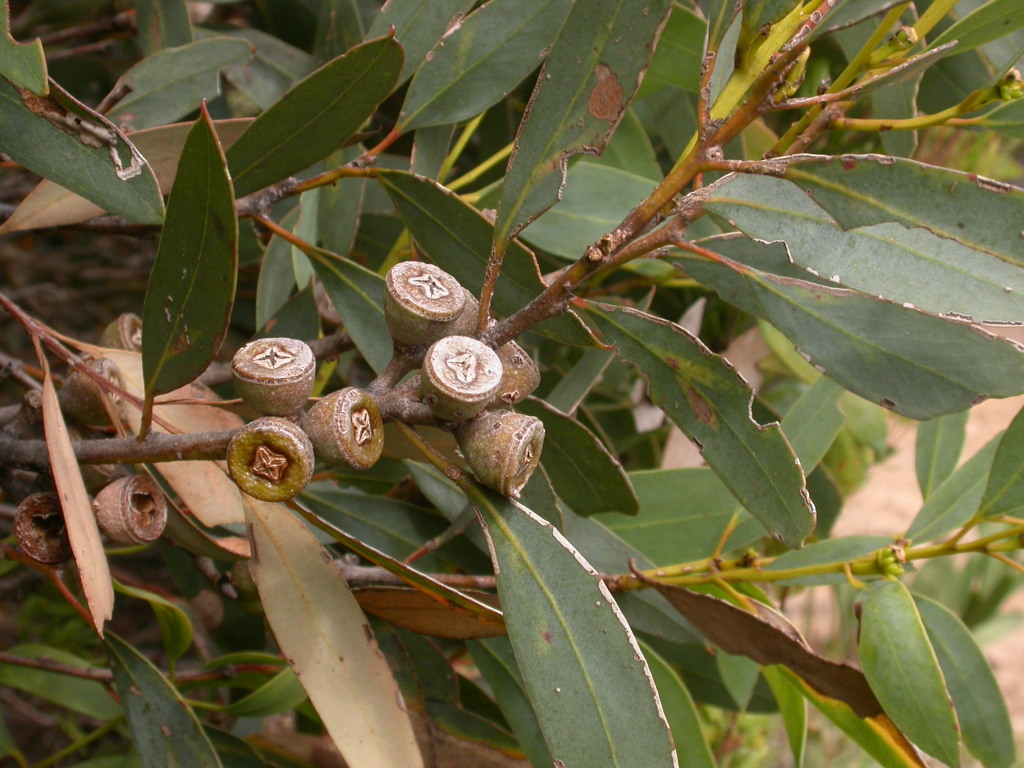Eucalyptus diversifolia
Bonpl. Soap MalleeMallee to 6 m tall; bark smooth. Juvenile leaves sessile, opposite for many pairs, then petiolate, alternate, oblong to lanceolate, to 8 cm long, 4 cm wide, green; adult leaves petiolate, alternate, lanceolate, held somewhat erect, 7–13 cm long, 1.2–2.5 cm wide, concolorous, glossy, olive-green or bluish-green; reticulation dense, broken, with scattered island oil glands. Inflorescences axillary, unbranched; peduncles to 1.2 cm long, 7–11-flowered; buds shortly pedicellate, diamond-shaped, to 1.2 cm long, 0.6 cm diam., no scar (single operculum); operculum conical; stamens irregularly flexed; anthers dorsifixed, oblong or slightly reniform; ovules in 2 vertical rows; flowers white. Fruit sessile or shortly pedicellate, cupular to obconical, to 1.2 cm long, 1.5 cm diam.; disc level to slightly ascending; valves 4, rim level; seed brown, glossy, smooth, pyramidal but distorted by one curved face, hilum terminal. Flowers Aug.–Jan.
Wim, GleP, Brid, VVP, GipP, OtP, DunT. Also WA, SA. In Victoria confined to dunes and limestony soils near Cape Nelson where it is abundant.
Its taxonomic affinities, based on leaf venation and anthers, lie with the Western Australian monocalypts.
3 subspecies, Eucalyptus diversifolia subsp. diversifolia and E. diversifolia subsp. megacarpa in Victoria.
Brooker, M.I.H.; Slee, A.V. (1996). Eucalyptus. In: Walsh, N.G.; Entwisle, T.J., Flora of Victoria Vol. 3, Dicotyledons Winteraceae to Myrtaceae, pp. 946–1009. Inkata Press, Melbourne.
 Spinning
Spinning


